From choosing plants to making them as livable as possible, we’ll go through everything that needs to be taken into consideration when working with these different spaces.
In summary:
- Styling the rooftop garden will require some work
- With such a tiny footprint, there’s no way of avoiding soil.
- Make sure to find an ideal planting spot for your plants.
- There are many different methods on how to style a rooftop garden, and every one of them is up to you to decide.
- If you’re looking for additional space, consider growing vegetables or herbs!
- Get inspired by our photos, be sure to check out the rest of the blog posts.
Gardening is not supposed to be arduous. It should be relaxing, instead. Unfortunately, not all people have sufficient space to grow some plants. Some do not even have any places to make the flowers thrive. If that is the case, consider using any available spot, including the rooftop.
You can find many good reasons to transform your bare rooftop into a garden. One of them is getting good sun exposure, not to mention the breathtaking view you can enjoy.
If you are seeking some inspiration to tap into your rooftop, check out our 10 small rooftop garden styling ideas. Here are some options and tips that we have gathered for you. As usual, Simphome presents you with the list.
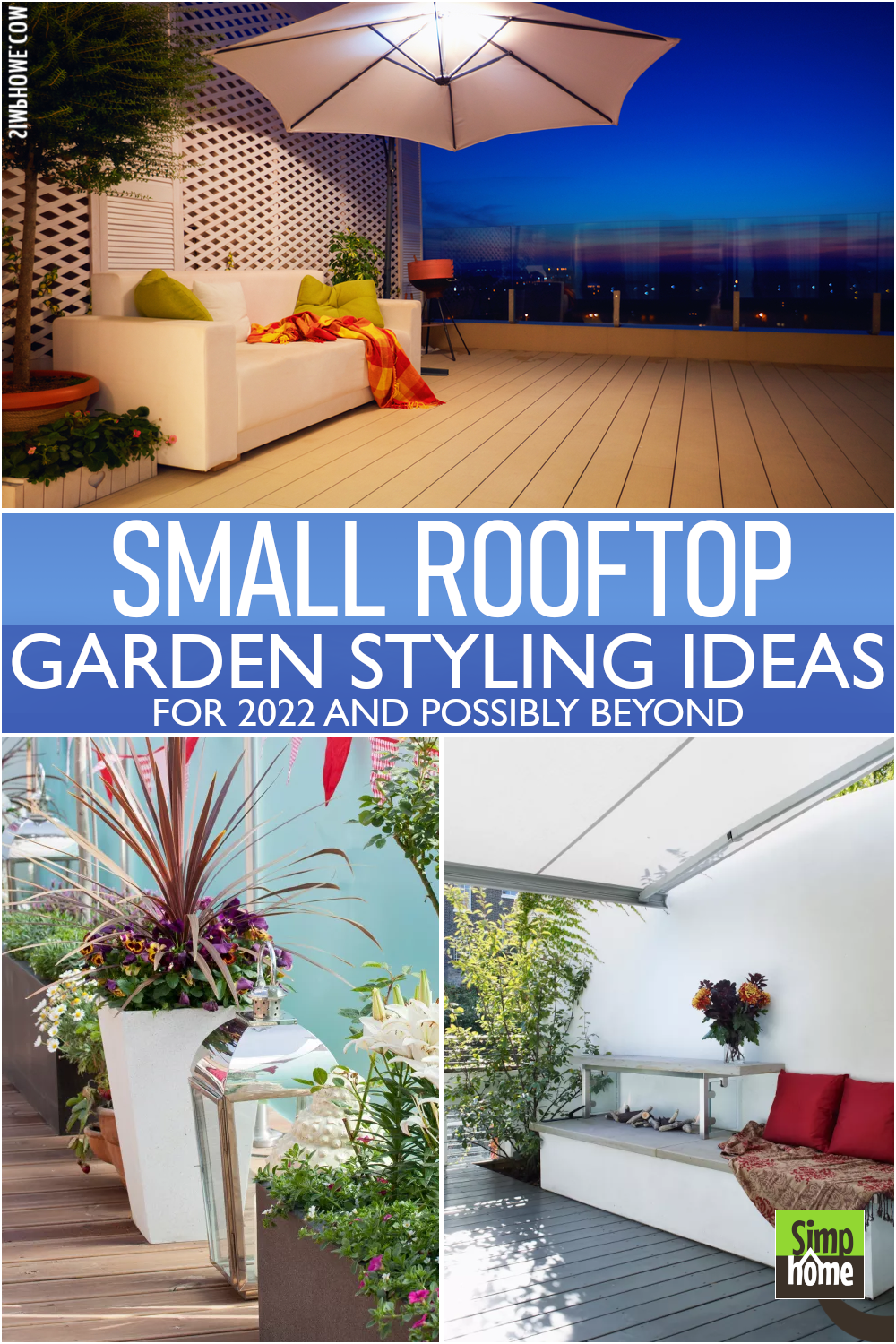
🔊10 Small Rooftop Garden Styling Video:
List Entries:
10. A Careful Planning to choose
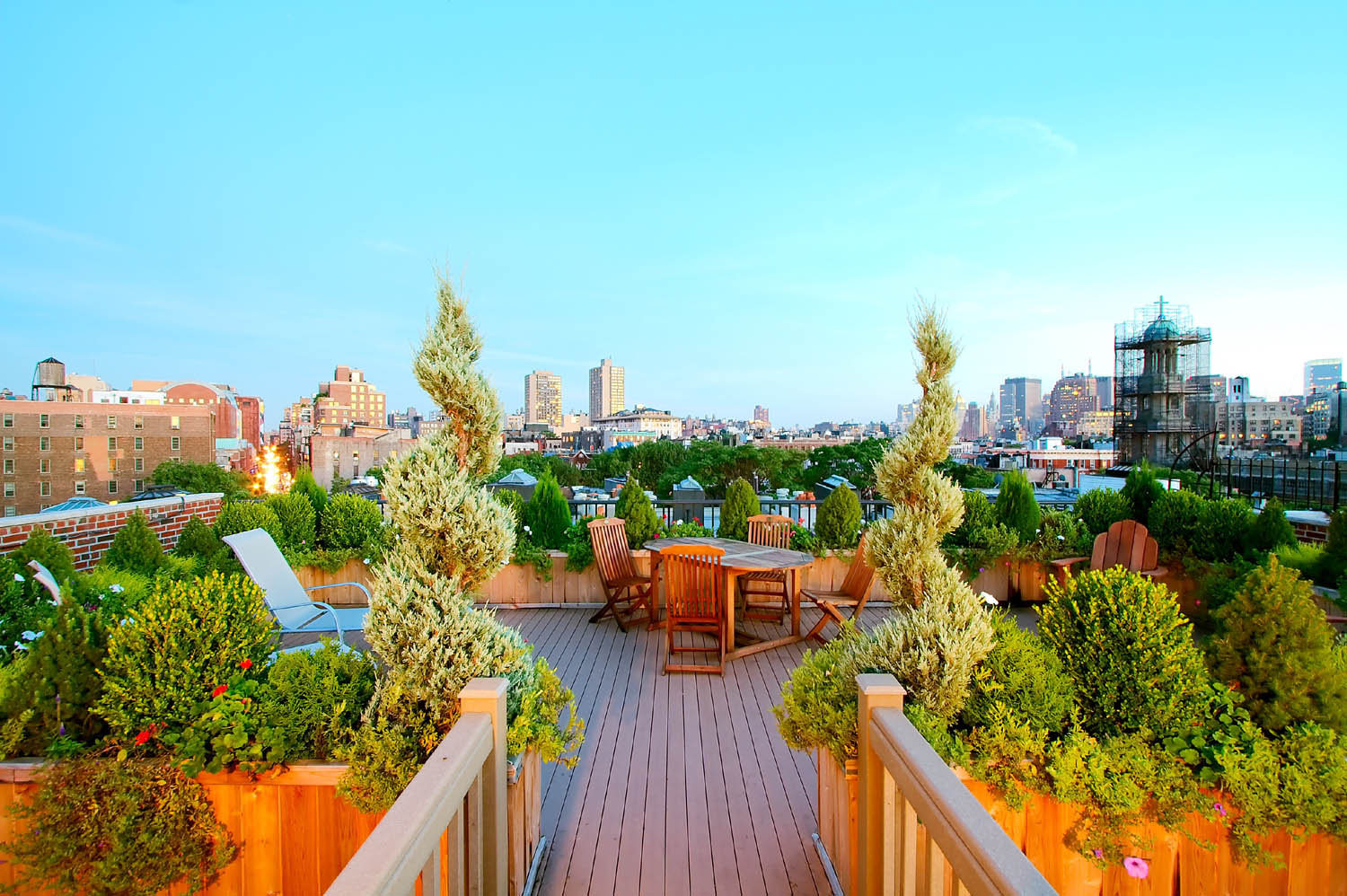 The essential condition you should know is how many pounds your roof can hold. That will determine the decking, planters, furnishing, etc.
The essential condition you should know is how many pounds your roof can hold. That will determine the decking, planters, furnishing, etc.
Pre-fabricated wood or fiberglass is lightweight material you could begin with for planters. You could use false bottoms for bulky containers to reduce the use of soil to fill them.
Then, you should think about the water system. You can try installing an automated drip irrigation system renowned for being a great time-saver.
Use tall evergreens or fencing to block unwanted views from neighboring buildings and to have more privacy. In that case, plants best suited for rooftop are bottom-heavy to survive the winds. Avoid large-leaved plants because they get easily shredded up by winds.
Detailed instructions:
- You would have to carefully plan the size of your rooftop. Think about the weight that can be added to it and do some research to see if there are local regulations or zoning laws in place.
- Check with your local building codes and make sure that you get everything right when it comes to the structural integrity of your building as well as drainage, electrical, and plumbing issues before going ahead with any changes.
- Decide whether you’ll be using any special equipment like lighting, pond pumps, fountains, or other accessories.
- Decide on the kinds of plants you want to use and, if there are any restrictions in terms of accessibility or maintenance, then you may want to rethink your plans. Perhaps backyard HOA regulations may restrict you from using certain plants for the roof garden.
- If you’re thinking about using raised beds, then you could go with small ones with an overall height of just under a foot or a few inches tall if that is all that is allowed by law (but no more than six inches deep).
- If your roof garden is small, it is best to use larger plants and use a few of them rather than many small ones. Don’t be afraid to use concrete or cement blocks for edging your beds or containers.
- Add some color by using colored, textured, or colored pavers.
- You could also use a few pots in your garden to save on time and money. This can be used to grow plants that are not easy to expand on the rooftop, such as mint or bergamot.
- If you do use raised beds, then put gravel at the bottom of it for drainage and then fill it evenly with topsoil or compost, depending upon what your plants would require.
- In order to make your roof garden look great, you’ll have to plant a variety of different plants in it. In order to make your garden stand out from the rest, you could consider using native plants as they are hardier.
- Try planting flowers like tulips, crocus, bleeding hearts, and forget-me-nots, among others, for early spring blooms, or try growing some shade-loving perennials like lilies and hostas that spread nicely for the summer months.
- You could also try planting bulbs like verbena and hyacinth, which last for much longer than flowers.
- For those who want to use containers to hold the plants, think about using plastic pots to start with as they are readily available and lighter in weight, but you might want to consider fiberglass or metal pots for longevity and durability.
9. Bring Meadow to the Rooftop
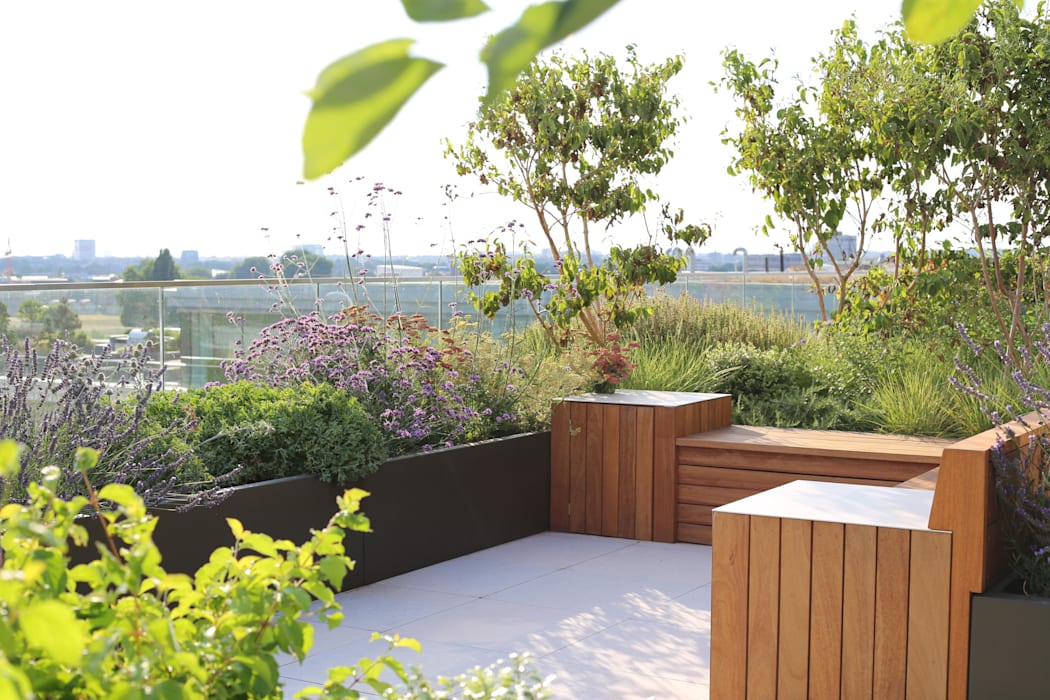 Although meadow is a complex habitat for plants and animals, creating a mini version of it for your garden is possible.
Although meadow is a complex habitat for plants and animals, creating a mini version of it for your garden is possible.
Meadow plants are relatively easy to grow from seed. When the annuals and perennials start blooming, an abundance of colors and scents will fill your garden.
Are you ready to roll up your sleeve? Start by selecting the essential plants: Cowslip, Poppy, Daisy, Red Clover, and Yellow Rattle. Each has its function aside from its attractive colors, such as providing nectar and pollen for insects or reducing the grasses to create open space for other plants to thrive. With careful planting, you can add some trees for shading.
Now, let’s get to the fun part.
For a total of five square meters, you will need about two dozen seeds. The best way to show them is by scattering them around before the seedlings sprout. Make sure you locate the center of each patch so that no plant will overshadow anyone.
After at least three months, carefully thin out some plants while some others may be flourishing on their own.
8. A Contemporary Garden idea
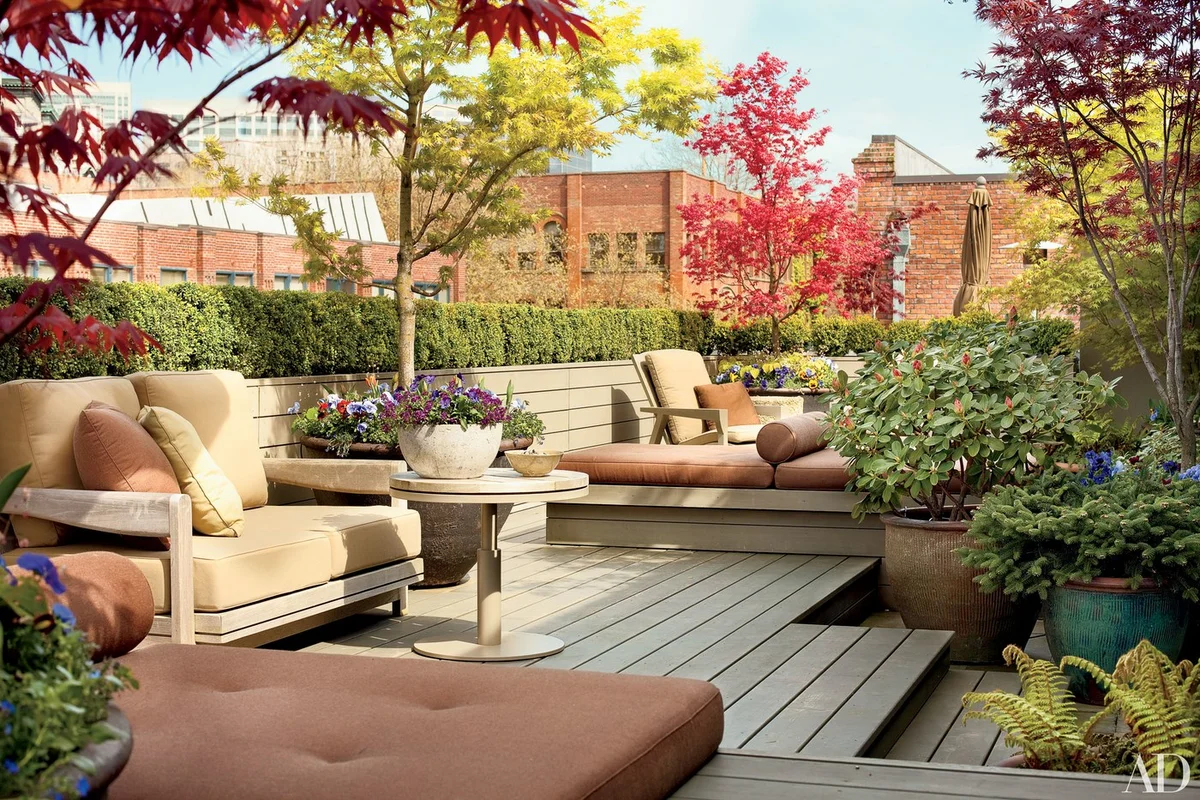 You can transform your bare rooftop into a fascinating sitting area for relaxation. Neatly trimmed shrub acting as edging and perfectly fitted furniture make the place look beautiful and elegant.
You can transform your bare rooftop into a fascinating sitting area for relaxation. Neatly trimmed shrub acting as edging and perfectly fitted furniture make the place look beautiful and elegant.
This contemporary garden use wood planks, stonewall, and bold shapes of planters that are classic and easy to maintain. Olive, Palm, and Strawberry provide a broad canopy that creates magnificent silhouettes.
Don’t integrate too many species, though. Use no more than twenty kinds of plants to keep it simple and sustain a practical landscape.
To copy the project, your short instructions are:
1. Use plenty of flower pots, at least five to six.
2. Set the pots on wooden planks or Japanese-style stepping stones to perfectly fit the space.
3. Arrange your plants in an intelligent manner, so they won’t look too messy and complicated.
4. One more thing: don’t forget to install a small table for one or two spots for you to enjoy the view!
5. Choose the material. Use the light and the breathable materials.
6. Color. Use gray and white as the primary color to give a sense of simplicity, elegance, but also a spark of modernity. Green plants are enough to make the garden alive and beautiful.
7. Add stones or wood planks for a more natural look and feel.
8. Make sure you plan your garden well before you start constructing it; be sure that enough plants fit within their open area and do not block traffic on the road, then make a diagram of your wish, so you don’t miss any important information while building it.
9. Don’t neglect the details, such as plants labels and furniture, to get a perfect garden.
10. Don’t forget to pick up the litter each day.
11. Remember: the most important thing about creating a rooftop garden is you have fun!
12. Make sure your garden can be water-tight so that it does not affect neighbors’ lives and cause any problems for yourselves.
13. Remember that maintaining a garden is not as simple and easy as it seems. It takes time, a lot of patience, and effort, so make the most of it.
14. Never forget to decorate this garden with colorful accessories or candles that can make the space look even more beautiful; also, you can use small fences to separate different areas or functional furniture to offer some privacy. You can use furniture to create small seating areas or an area for taking a nap.
7. Try Waterfall Project
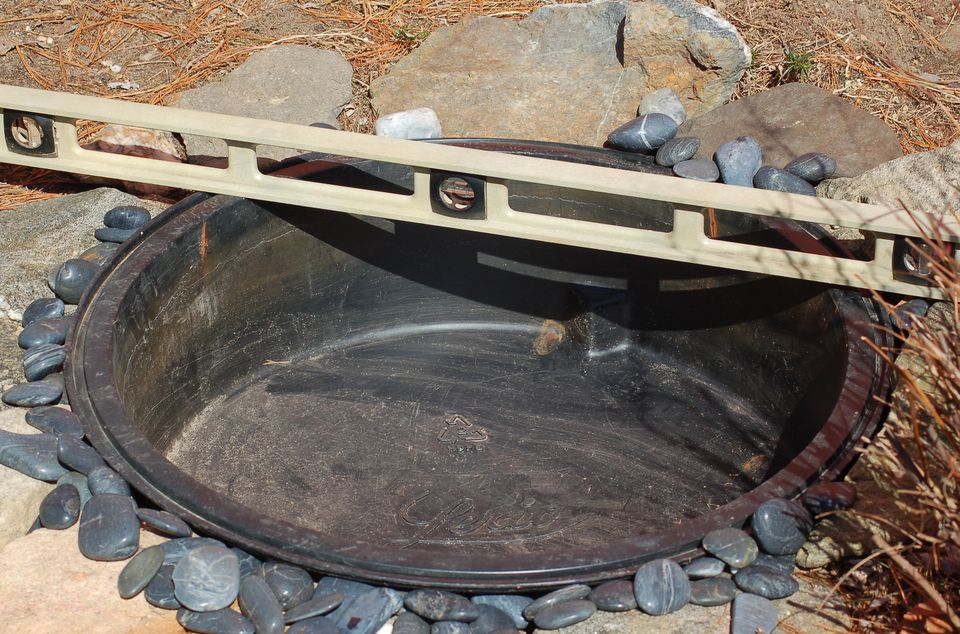 Waterfall in a rooftop garden? Why not. It can be an eye-grabbing design for your landscaping work. It can make your garden an entertaining space where you will love to stay.
Waterfall in a rooftop garden? Why not. It can be an eye-grabbing design for your landscaping work. It can make your garden an entertaining space where you will love to stay.
If you opt for this idea, focus on the pond where the waterfalls and the cascading structure are located. Surely you don’t want to make it add up more weight than your rooftop can hold.
Rock is a simple, cheap, and easy-to-find material you can use to build your waterfall. Use a pump to keep water recirculating from the pond to the top of the waterfall.
Another alternative if you cannot find rocks is to make a cascading clay pot foundation. Don’t forget to design the pump, tubing, and pond liner so you can choose what materials are best for your garden rooftop. Talk to a landscaping expert if you find difficulties designing a waterfall for your rooftop garden.
Here are view essential things to consider building a rooftop garden for the first time:
- No 1. Choose the area
In case you are using a big rooftop, it’s wise to start off by building the small container design beds first. This way, you will know how to go on from there. You can move it upward as the garden grows. - No 2. Decide on how much space for plants and how many containers you need
Then, think about how much space you will have to accommodate your gardening needs. This is a must before putting in any work at all. - No 3. Decide on the material for containers
You have a wide selection of materials to choose from, like plastic, ceramic, or even glass. Choose the one you find most appealing and durable. - No 4. Decide on a warning sign- A big neon sign may be a good idea
This is also an excellent choice if you want to state your availability in a way that will guarantee new visitors who are passing by your garden.
Here are view basic things to consider building a rooftop waterfall garden for the first time:
1. Choose the area
Choose the best spot in your garden or rooftop to build a waterfall. It should be a spot where you don’t have to worry about the water but rather enjoy it. You can hang and stick things in it. The only condition is that it must be strong enough to hold the weight of your water feature.
2. Choose materials for the structure
Most of the time, rocks are used for this purpose in order to design a natural and beautiful waterfall. You don’t have to break your bank to buy rocks, though. There are many places where you can find cheap stones. Plus, you can also make aqua-colored stones from leftover ceramics and coloring pigments.
3. Choose the spot for your pond
The bottom part of the waterfall will serve as a pond where you can grow aquatic plants and water lilies. If you want it to look more natural, choose a site that is in line with your garden’s design theme or even its style if it has one.
4. Choose the best location for your pump and filter
These will be highly useful in pumping the water from the pond to the waterfall. A pump is also necessary to keep water circulating within your garden rooftop system. You can choose the location based on its accessibility in case you need to clean or repair anything.
5. Choose a spot for your waterfall
There are many ways to arrange waterfalls, including tiered, cascading, or any other design that can catch the wind and make it look completely natural.
6. Choose the materials for your water feature
You can also add soft color plants to the waterfall. You can also use rocks or other things that you can find easily to design a unique structure.
7. Choose the plants for your water feature
You can choose from aquatic or wetland plants that are suitable for a small water garden. They are usually easy to grow and care for. You can also add floating plants to your water feature. They’re excellent for absorbing extra oil and help eliminate the build-up of waste products in your pond’s water.
8. Choose the right fish
Fish are beautiful creatures, and they will add color and aesthetic value to the garden. There are some species that are not harmful to your plants, like the goldfish. Other types include the Koi and pearl guppies.
9. Choose fish food
These will help your aquarium fish thrive, including their appetite. You can always provide fish food after every 1 to 2 weeks based on what they prefer eating at different times of the day.
10. Prepare the pond
We can design the garden or rooftop in any way we like. Usually, a comprehensive design is preferred in order to maintain its looks and structure. Even though we take care of our terrace, our garden will be looking after us. The more we take care of it, the more it will look natural and improve its beauty to new heights.
It’s not always as easy as it sounds, though, especially if you’re building a garden from scratch or just designing your rooftop.
6. The Outdoor Living Room Idea
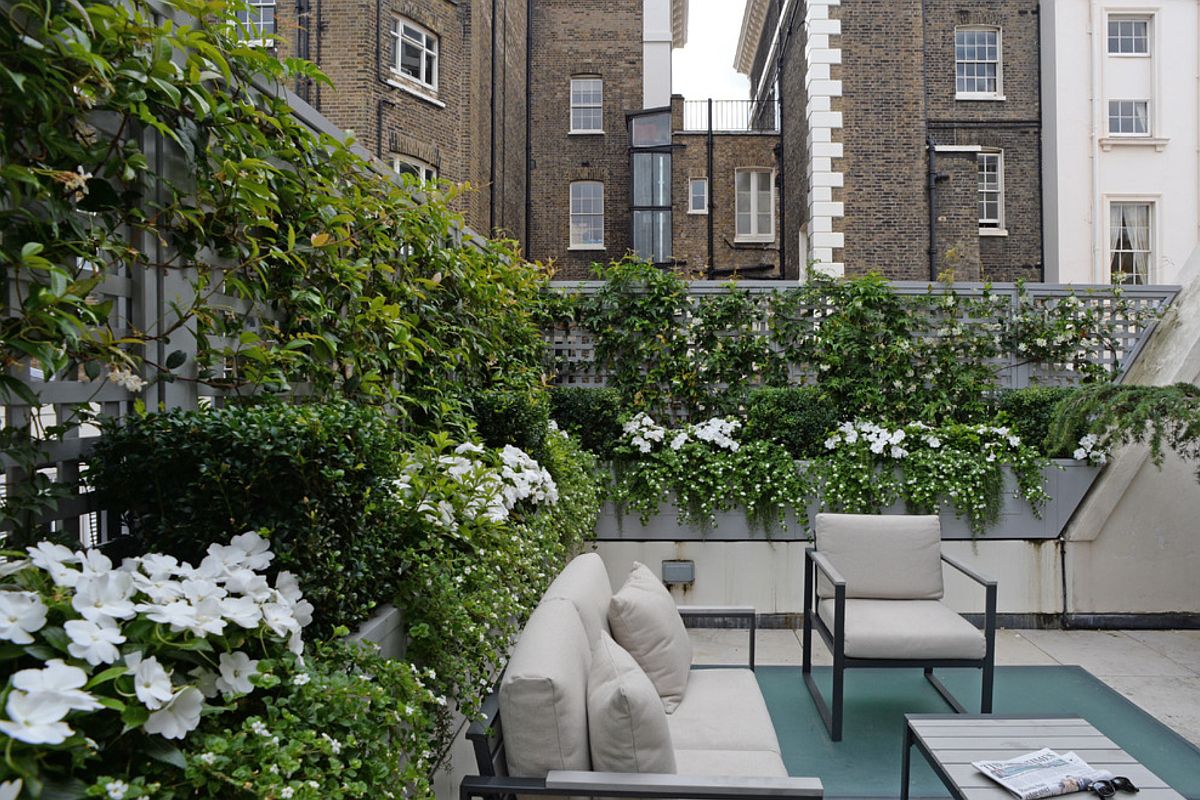
Potted plants can tone up the area and perfume it with fragrance. Invest in screens, fences, and planters to make your garden look more like a secluded retreat.
Vines and shrubs can provide a green screen and combine it with jasmine to add soothing scents. To soften the view, you can add some pillows or rugs. That will encourage your family and friend to hang out there on summer days.
5. A Fresh Style to Enjoy the Evening
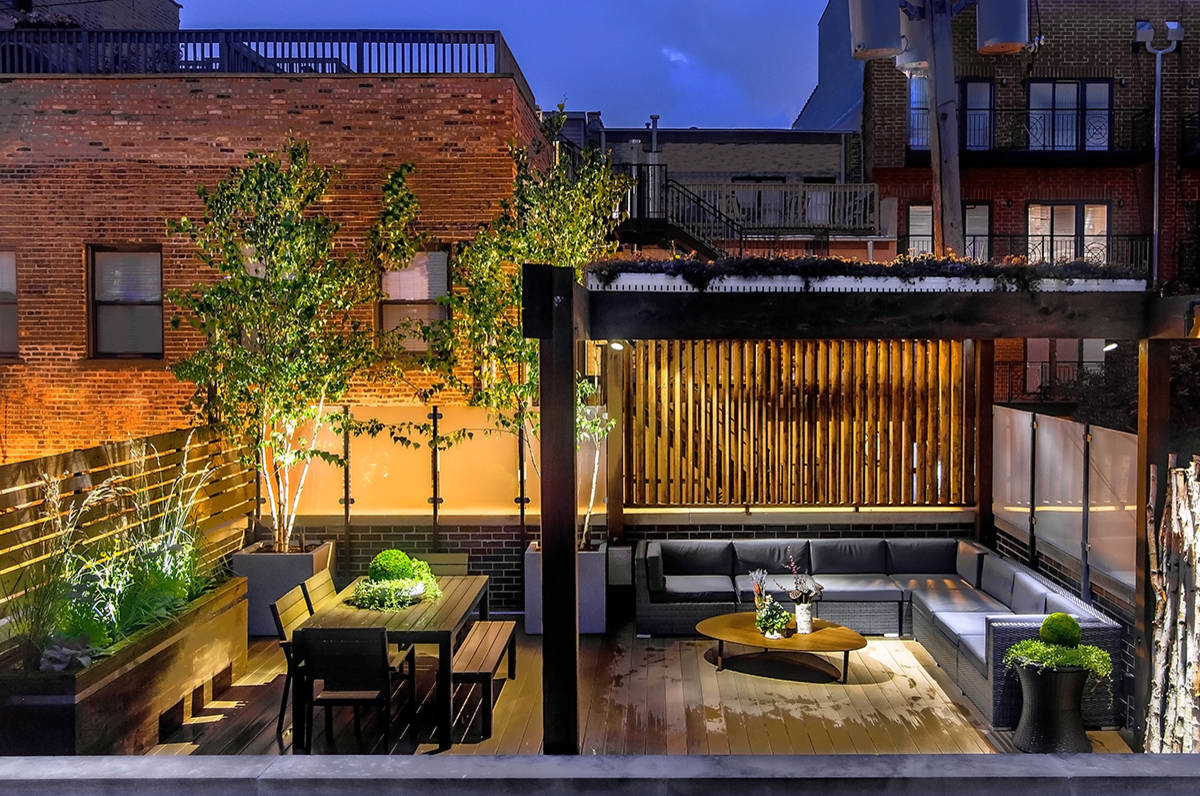 When you have decided to make your rooftop garden double as an outdoor living room, install landscape lightings so you can enjoy the nights as well as the days. If you want a simple one, just hang a few crisscrossing strings of lights. It is a treat to relax in the garden during summer evenings.
When you have decided to make your rooftop garden double as an outdoor living room, install landscape lightings so you can enjoy the nights as well as the days. If you want a simple one, just hang a few crisscrossing strings of lights. It is a treat to relax in the garden during summer evenings.
Soft lighting and night-scented plants are a blessing combination. Your garden will become an inviting spot to sit in at the end of the day.
However, installing outdoor lighting is a dreadful task. You should carefully lay the cable with a special connection that prevents short circuits.
On the other hand, you could install solar-powered light, which is more efficient and safe. Then, you should install the light based on what you want it to function.
4. Add some Shelters
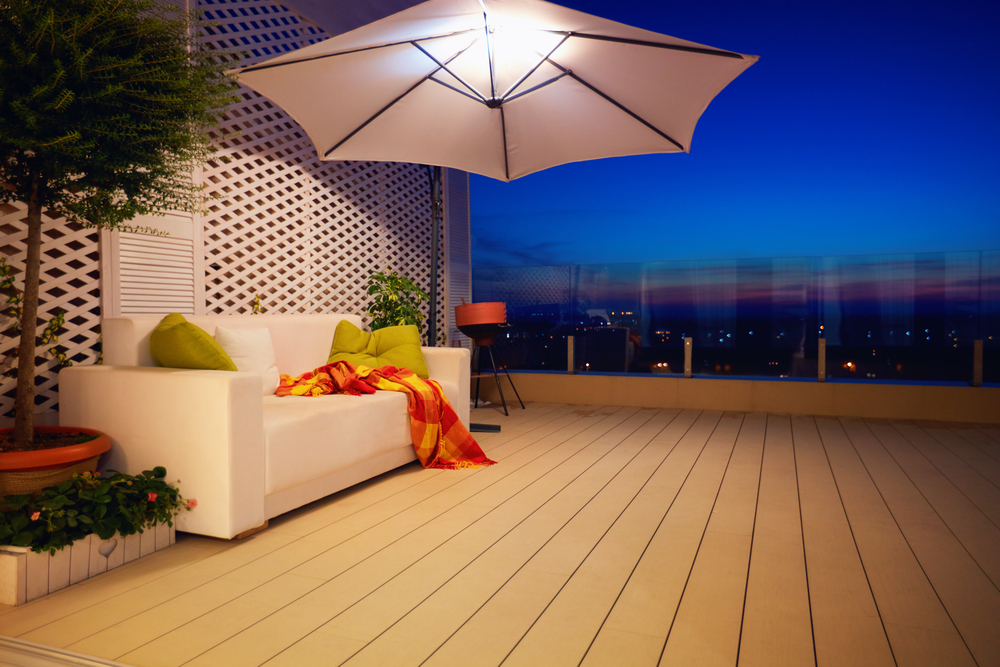 Common problems on a rooftop garden are wind and sunlight. Many plants can survive them, but you might like to have some shelter to enjoy them at leisure.
Common problems on a rooftop garden are wind and sunlight. Many plants can survive them, but you might like to have some shelter to enjoy them at leisure.
Solid windbreaks are not an excellent choice because they can block the surrounding area’s view. Rather than that, opt for permeable trelliswork that you can arrange horizontally to filter the wind. Another option will be a holed sailcloth that can do the same thing. If you want a more solid one, you can use glass that provides uninterrupted views. Just make sure it has sufficient holes in it. Otherwise, the airstream will smack over it.
Pergolas or Gazebos is an excellent addition to your roof garden. They give you some protection against wind and sun exposure. Moreover, they add more charm to the space. Not only you, but some plants will also benefit from their shading.
Relevant details:
No 1: Build a frame of wood or aluminum that is tall enough to cover your activity space.
No 2: Make several holes on the frame so it can serve as a windbreak and solar-panel collector.
No 3: Install hanging planters to make your roof garden look more attractive.
No 4: Decorate the garden with a number of plants to make it an attractive place.
No 5: Hang some bird feeders so you can observe birds if possible.
No 6: If you want to install water features, do it after you have finished the construction.
No 7: Make sure you can enjoy the garden from inside your home.
No 8: If there is not a slope to direct roof water to a rainwater tank, install some gutters so you can collect water for future usage.
No 9: Enjoy yourself at the end of your hard work!
3. Choose Appropriate Flower Containers
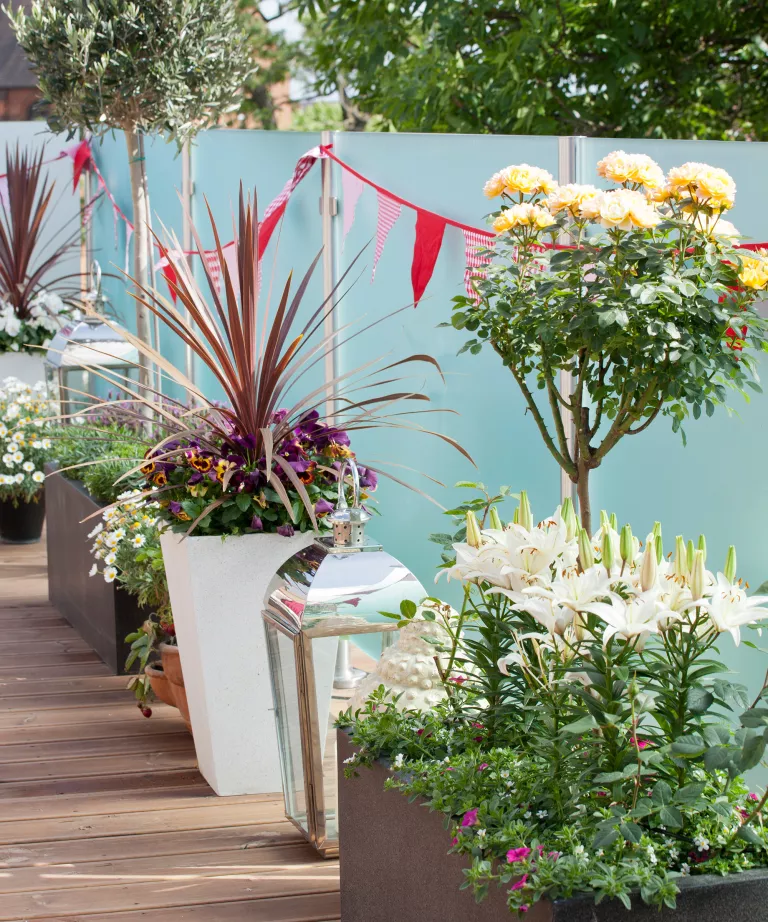 As explained previously, weight is an important issue when designing a roof garden. Therefore, you should consider the numbers and sizes of containers you will arrange.
As explained previously, weight is an important issue when designing a roof garden. Therefore, you should consider the numbers and sizes of containers you will arrange.
To be sure, consult a structural engineer to calculate the weight your roof can hold. After that, choose light and sturdy planters for the outdoor garden.
There are plastic or fiberglass pots that are lighter than terracotta containers. Then arrange them on the cantilevered shelves or surrounding walls, and avoid placing too many in the center.
View alternative ideas on how to build your first flower containers ideal for your rooftop garden:
1. Prepare the base
2. Planting your flowers
3. Add decorative elements
4. Watering and protecting plants from rain or cold
5. Painted planters for bright colors and effects
More ideas on how to make a flower container:
- No 1. Paper pots stuck on wires – DIY with instructions; this is a clever idea; inking a square hole in the top of your pot gives the illusion of being painted, and placing a wire through it will hold it up without fear of tipping over;
- No 2. DIY planters for small spaces – if you have no room for a flower pot, you can use an empty coffee can!
- No 3. Paint soda bottles for your colorful rooftop garden – recycle your plastic bottles to use them as flower pots; shapes and colors are limited only by your imagination;
- No 4. Use clear containers for a simple, natural look – no plant in a transparent container will look artificial, and any color will be visible.
- No 5. Collect old bottles, jars, and cans – this is a great way to recycle and bring color to your garden; use an empty tin can as a planter for herbs, or make a rustic planter from an old metal barrel.
- No 6. Store plants on the roof – make simple wooden containers for flowers by cutting just about any shape you like from wood you have on hand to suit your garden space;
- No 7. Make a light, “floatable” container – use a liner to make a container the same size as your flower pot using hardware cloth and creating a place for drainage. Then put your plant in the middle, cover it, and fill it with water; put it on top of a bucket of water to give it more weight, but not too much.
If you choose to have potted plants on top of your roof garden, ensure that each pot has drainage holes at the bottom.
2. Style the Flooring
 Flooring for outdoor space is as important as the indoor area because the right flooring for the rooftop can make it more like an extension of your home.
Flooring for outdoor space is as important as the indoor area because the right flooring for the rooftop can make it more like an extension of your home.
Popular floorings for the rooftop are tiles, concrete, decking, rubber, fake grass, or paint. They are hardy and can withstand any weather. Moreover, they don’t require too much maintenance.
If you want it to feel more natural, artificial turf can add a layer of insulation and be greener than having a plain flat roof.
Alternatively, you can pave the patio with terracotta tiles or concrete flooring. These are easy to lay on your rooftop and won’t cost you much money to do so. If you have a roof garden already, it would be an ideal choice to paint the floor instead of laying tiles or anything else. You can get rid of mowing grass, which is the best part.
Lastly, Number 1. Improve the vertical space
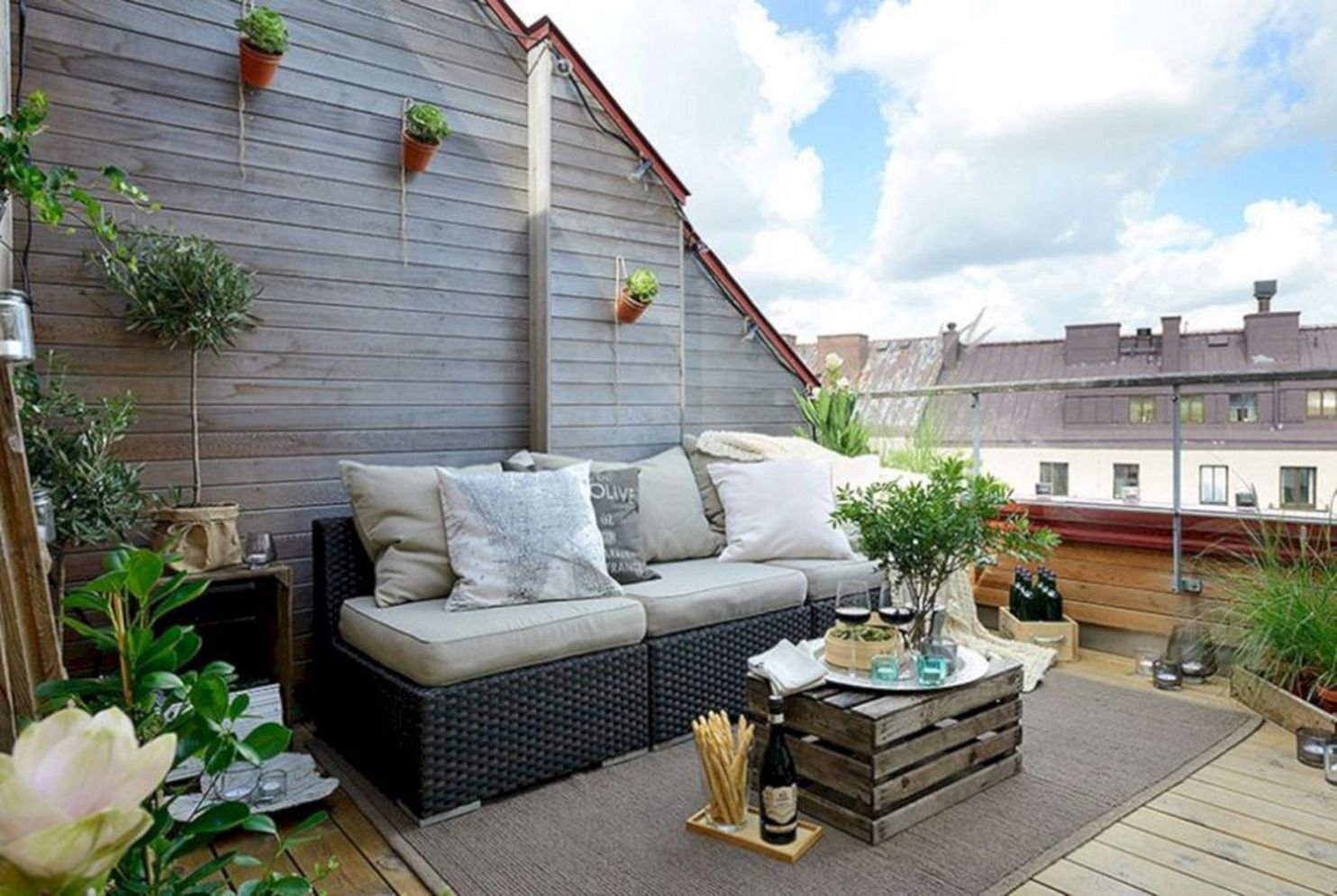 Vertical gardening is a popular option if you have limited room. You can achieve it with many methods. The easiest is hanging planters on the wall or using railing planters.
Vertical gardening is a popular option if you have limited room. You can achieve it with many methods. The easiest is hanging planters on the wall or using railing planters.
Another way is to use old ladders to grow the plants. When you create one, choose ornamental plants in various colors and containers to create a dreamy garden.
Succulents are the easiest plants to grow because they do not demand much of your attention. Besides flowers, you can try planting veggies or herbs. That way, you can benefit more from them.
Step by step instructions:
- Attach the potting stand to the wall. Use a rope, string, or wire to hang it. Make sure it is not too heavy.
- Attach the water trough
- Place the plant in its own container. Choose appropriate plants and containers to make the best use of your space. If necessary, decorate your garden with plants, pots, and flowers.
- Add additional features such as a planter box, decorative plants, or planters.
- Make it look attractive. You can use lanterns, candles, or grow lights to light up the space and make it more beautiful.
- Maintain the plants properly by watering them daily and refreshing their containers’ soil every week or month if they are grown in a container planter box.
- Alternatively, you can place a wooden plank or wood panel inside the trough to grow your plants. You can also use an old ladder for the same purpose.
- Top with colorful plants, pots, and flowers
- Put lights in strategic locations to add some glow-in-the-dark spaces, similar to what you see at night when you visit a garden in a park.
- If possible, take a nice picture. It looks great if you concentrate on the plants and it will give you a feel of achievement.
- Make it look nice with your favorite colors and styles. To make it look more attractive, consider buying colorful accessories like ornaments, lamps, candles, or fresh flowers.
- Reflect on the advantages of gardening on a small rooftop.
- Consider making vertical gardening projects every season to make your garden look attractive all year long (or at least during the season when you have plants).
- The decorative floral pots
You can start by installing some decorative flower pots or baskets on the south side of your balcony to provide it with some shade and extra planting space. You can also grow a herb collection on a small terrace that is unobstructed by exterior walls if you prefer that style of gardening that is not too elaborate. - Grow a vine to cover a wall
If you have a wall, consider growing a vine on it to cover the surface and make it look natural and beautiful. To do that, you will have to pick the right kind of vine, a durable one such as Wisteria in this case. The only thing you need is some quality time and effort to grow your own vineyard on the roof or balcony (or any vertical space). - Grow a small garden on the ledge
If you have a tiny balcony, consider growing some flowers and plants on the ledge to make it more appealing. It will also help you cover that space and make it look natural and beautiful. You can combine your indoor gardening with this style of balcony gardening if you have enough space there.
To do that, choose flowers that are like full sun in the morning. Make sure your windows are not fully closed in the summer months because some plants such as geraniums need a lot of sunlight to survive. The only downside is that if you have limited sunlight or an unpredictable one, your plants will suffer. - Grow crops and herbs on the balcony
If you have a small balcony, consider growing flowers and herbs there. You can put them in pots or grow them in containers that are suitable for indoor gardening. The only downside is that if you have ample space there, you will have to make sure that your plants get enough sunlight and avoid shading the windows in the winter months. If your plants do not survive properly, consider adding artificial lighting, so they get enough light to grow well. - Build yourself a mini café on the rooftop
If you have ample space on your balcony, consider creating a lovely café there. By using some furniture and decorations such as hanging plants and cool chairs, you can create a pleasant outdoor atmosphere. Your guests will be amazed when they see this outdoor space on the balcony. You can also make it look more appealing with screens to prevent heat from escaping your home during the hot summer months. - Make a patio on the roof
Another idea is to make a patio on your roof. This step might require some serious effort as it involves additional construction. The upside is that once you are done, your balcony will look more appealing and enticing. - Low hanging planters
To start it, pick low-hanging planters. Choose a container that is not too large. You can also consider decorating the inside of the container with colorful plants, stones, and decorative pots. - Decorative pots and planters
You can make your balcony look more attractive by adding decorative pots or planters. You can paint them in bright colors to add some brightness to the space and make it look beautiful at night or during the day from a distance.
Conclusion:
The easiest and cheapest way to grow fresh food on your rooftop is to use a countertop indoor hydroponic garden. It enables you to produce different types of herbs and veggies without needing too much space or sunlight. You can also experiment with other techniques, such as vertical gardening if you have the right conditions for it.
Consider investing in a small indoor hydroponic kit if you want to grow your own crops on the rooftop or balcony. If you have only a tiny space, consider planting herbs and flowers there because they are easy to maintain and do not require much time on your part.
So,
These 10 small rooftop garden styling ideas are worth trying. They come in various choices, from the effortless way of using containers to the tough one that entails advanced gardening skills. You can create any style of a garden on your roof.
References:
10. Gardendesign.com, Themiddlesizedgarden.co.uk
9. Livingetc.com, Gardenersworld.com
8. Gardenerknowhow.com, Mylandscapes.co.uk
7. Gardenerknowhow.com, Thespruce.com
6. Loveyourlandscape.org
5. Loveyourlandscape.org
4. Homesandgardens.com, Nobroker.in
3. Homesandgardens.com
2. Nobroker.in
1. Gardenmanage.com